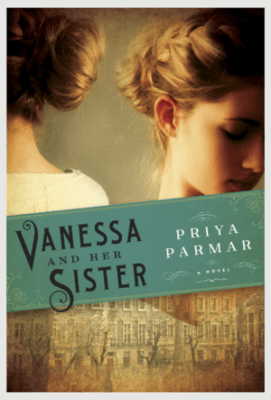This post is about how just one book can lead to many others. I love it when that happens.
I recently finished Vanessa and Her Sister by Priya Parmar (previous post here) and so enjoyed the story of Vanessa Bell and her sister Virginia Woolf that I was inspired to keep reading. It seems I just can’t get enough of Vanessa, Virginia and the whole Bloomsbury Group. It has become my own little reading rabbit hole. If that isn’t that a sign of an inspiring book, I don’t know what is.

The first thing I set out to do was to read Howard’s End by E. M. Forster. There was a scene in Vanessa and Her Sister where Vanessa mentions a beautiful new novel she’d just read (February 1911):
“And – I finished Morgan’s [E. M. Forster’s] beautiful new novel on the train. It is about sisters: one wild and uncompromising but breathtaking in her courage, And one practical, reasonable, and unhappily bound by her good sense. Elmira Dashwood and Marianne. Margaret and Helen Schlegel. Even the name is haunting: Howards End.”
Although I loved Room With A View, I hadn’t read Howard’s End before, so I was excited to discover something old yet new. And of course I loved it. His sentences can leave me breathless, like this one, which describes Margaret’s thoughts upon the death of her friend Mrs. Wilcox:
It is thus, if there is any rule, that we ought to die – neither as victim nor as fanatic, but as the seafarer who can greet with an equal eye the deep that he is entering, and the shore that he must leave.
Now I’m searching all over Netflix for the 1992 film with Anthony Hopkins and Emma Thompson. Anyone know where I can find it?
My next inspiration that came from Vanessa and Her Sister was some more of Virginia Woolf’s early fiction. I never knew that most of Woolf’s work I was familiar with was written later in her life. For example, To The Lighthouse (one of my absolute top-ten books) was written when Woolf was 45 years old with only 6 years left before she would take her own life. The Voyage Out, Woolf’s first novel, was written when she was just 25 years old. I was curious to detect the difference in her writing.
The introduction to my edition claims that at this young age, “Woolf was still writing under the shadow of E. M. Forster and the traditional novel. . . . One can see her experimenting, slowly honing the style that was to become her hallmark, but where later she was fearless, here she is tentative, still depending on plot, not style, to drive the narrative.” I love the idea that women grow more fearless with age. So true, don’t you think?
I’m still in the middle of The Voyage Out, but already I can tell you that I am enjoying the insight that I have from reading Vanessa and Her Sister. In fact, the novel was written in the middle of all of the events related in Vanessa and Her Sister, including their brother Thoby’s death, Vanessa’s marriage, and the love triangle with Clive Bell. No wonder Virginia was inspired to write about marriage, about love and death, about women’s choices. I feel like I know Woolf and her milieu; I can see the real-life Bloomsbury people reflected in her characters. It’s fun.
Now that I’m on this kick, I’m not sure what I’ll read next. I’ve got Hermione Lee’s biography Virginia Woolf on my TBR pile, but maybe I’d rather read some more Bloomsbury fiction. Any recommendations?




You must be logged in to post a comment.